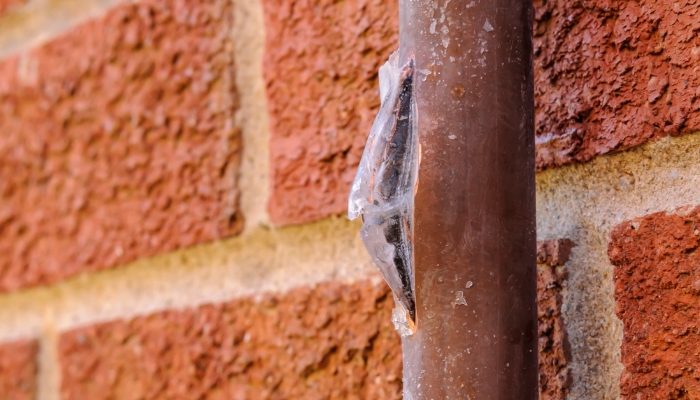
When You Experience Unexpected Frozen Pipes in Atlanta
When you think of the Marietta and Atlanta, GA area, freezing temperatures and busted or frozen pipes probably are not the first things that come to mind. But the winters here in Georgia have been throwing curveballs in recent years.
Sudden temperature drops and cold snaps have made frozen pipe breaks a growing concern for homeowners and business owners alike. These unexpected freezes don’t just cause inconvenience, they can wreak serious havoc on your plumbing, your property, and your wallet.
Why Frozen Pipes Are a Problem near Atlanta
Atlanta’s homes and infrastructure weren’t exactly designed to handle prolonged periods of freezing temperatures. That means when the weather takes a chilly turn, your pipes could be at serious risk of freezing and worse, bursting. The damage from a single burst pipe can cost thousands of dollars and displace families or halt businesses for days.
How to Tell If Your Pipes Are Frozen
The signs of a frozen pipe or a break aren’t always dramatic. Sometimes, they whisper before they scream. Recognizing those early warning signals can make all the difference between a minor fix and a major disaster.
Common Signs of Frozen Pipes:
- Sudden loss of all water
- Sudden loss of water pressure
- Unexplained puddles or water stains
- Frost on exposed pipes or hose spigot
- Unusual noises from the plumbing system
If you experience a frozen pipe break near Atlanta, the best solution is to turn the water off to the entire home and allow the water to thaw. Locate the break if possible and be prepared with a bucket or some type of containing device to secure the water once it thaws.
Even with the water off in the home, there is still water in the pipes that cannot be drained until thawed out. Water will come out of the break once thawed. Be prepared! Once thawed, a proper repair and testing should be made immediately.
How Pipes Freeze in the First Place
Pipes don’t just freeze because it’s cold. They freeze because the temperature drops low enough, for long enough, to allow the water inside them to turn into ice. Once water freezes, it expands. That expansion is what causes the pipe to crack or burst, especially in confined spaces where there’s no room for the ice to go.
Typically, when the temperature dips below 20°F (-6°C), your pipes are in real trouble, especially if they’re uninsulated or exposed to the elements.
Most Vulnerable Areas in Your Home Include:
-
Attics
-
Crawl spaces
-
Unheated garages
-
Exterior walls
-
Outdoor hose bibs
In Atlanta, where homes often have pipes running through poorly insulated walls or vented crawlspaces, that risk shoots way up.
Atlanta’s infrastructure just isn’t built for frigid conditions. Many homes, especially older ones in neighborhoods like Decatur or East Atlanta Village, have outdated plumbing systems or minimal pipe insulation. That’s like sending your pipes into a snowstorm without a coat.
Just partial freezing can block water flow, increase pressure in the line, and cause a weak spot to give way.
The Warning Signs Before a Pipe Breaks
Pipes don’t usually burst without a bit of warning—thankfully. There are early signs that tell you something isn’t right, but they’re easy to miss if you’re not paying attention.
1. Slow or No Water Flow
If you turn on a faucet and only a trickle comes out—or nothing at all—that’s your first red flag. This often means ice is forming inside the pipe and blocking the flow. The pressure builds behind the ice, increasing the likelihood of a rupture. If only certain taps are affected, it’s likely a localized freeze.
2. Frost on the Outside of Pipes
Visible frost or condensation on exposed pipes, especially in basements or crawl spaces, is a strong indicator that the water inside might be freezing—or already frozen. This is your cue to act fast.
3. Strange Smells from Faucets or Drains
Ever get a weird smell from a sink or shower during a cold snap? That could mean a blockage due to ice, which causes odors from the sewer line to back up into your home. It’s not just gross—it’s a sign something’s blocking the flow.
4. Unusual Sounds in the Walls
Popping, banging, or clanking sounds coming from your walls might be water struggling to push through a partially frozen pipe. That “water hammer” sound can also signal high pressure or air trapped behind an ice plug.
These signs are your warning shot. You’re not dealing with a burst yet—but you’re close. If you catch these early, you may be able to thaw the pipe and prevent serious damage. Ignore them, and you could be in for a wet, expensive surprise.
DIY Checks Homeowners Can Do To Confirm Your Pipes Are Frozen
-
Touch the pipe: Is it ice-cold or frosty?
-
Listen for hollow or thudding sounds
-
Check if water comes out of neighboring faucets
Immediate Steps to Take If You Suspect a Frozen Pipe
Here are some DIY tips if you suspect your pipes are frozen.
Shut Off the Main Water Valve
This prevents a full-on flood if the pipe bursts while you’re inspecting it.
Try Safe Thawing Techniques
-
Use a hairdryer (never an open flame)
-
Wrap pipes in hot towels
-
Use a space heater safely in the area
Avoid These Common Mistakes
-
Don’t use a blowtorch (seriously)
-
Don’t ignore small leaks—they’re usually big problems in disguise
When to Call a Plumber
If you’re unsure or you think a pipe has already burst, call a licensed plumber, like TKO Plumbing, ASAP. Time is water (and money) in this case.










